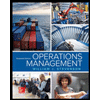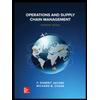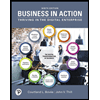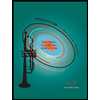List two analytical tools that can assist in evaluating risk associated with a product and explain the differences between these methods.
Critical Path Method
The critical path is the longest succession of tasks that has to be successfully completed to conclude a project entirely. The tasks involved in the sequence are called critical activities, as any task getting delayed will result in the whole project getting delayed. To determine the time duration of a project, the critical path has to be identified. The critical path method or CPM is used by project managers to evaluate the least amount of time required to finish each task with the least amount of delay.
Cost Analysis
The entire idea of cost of production or definition of production cost is applied corresponding or we can say that it is related to investment or money cost. Money cost or investment refers to any money expenditure which the firm or supplier or producer undertakes in purchasing or hiring factor of production or factor services.
Inventory Management
Inventory management is the process or system of handling all the goods that an organization owns. In simpler terms, inventory management deals with how a company orders, stores, and uses its goods.
Project Management
Project Management is all about management and optimum utilization of the resources in the best possible manner to develop the software as per the requirement of the client. Here the Project refers to the development of software to meet the end objective of the client by providing the required product or service within a specified Period of time and ensuring high quality. This can be done by managing all the available resources. In short, it can be defined as an application of knowledge, skills, tools, and techniques to meet the objective of the Project. It is the duty of a Project Manager to achieve the objective of the Project as per the specifications given by the client.
List two analytical tools that can assist in evaluating
risk associated with a product and explain the differences
between these methods.
Risk is made up of two parts: the probability of something going wrong, and the negative consequences if it does.
Risk can be hard to spot, however, let alone prepare for and manage. And, if you're hit by a consequence that you hadn't planned for, costs, time, and reputations could be on the line.
This makes Risk Analysis an essential tool when your work involves risk. It can help you identify and understand the risks that you could face in your role. In turn, this helps you manage these risks, and minimize their impact on your plans.
Risk Analysis is a process that helps you identify and manage potential problems that could undermine key business initiatives or projects.
Risk analysis is useful in many situations:
- When you're planning projects, to help you anticipate and neutralize possible problems.
- When you're deciding whether or not to move forward with a project.
- When you're improving safety and managing potential risks in the workplace.
- When you're preparing for events such as equipment or technology failure, theft, staff sickness, or natural disasters.
- When you're planning for changes in your environment, such as new competitors coming into the market, or changes to government policy.
Step by step
Solved in 4 steps









